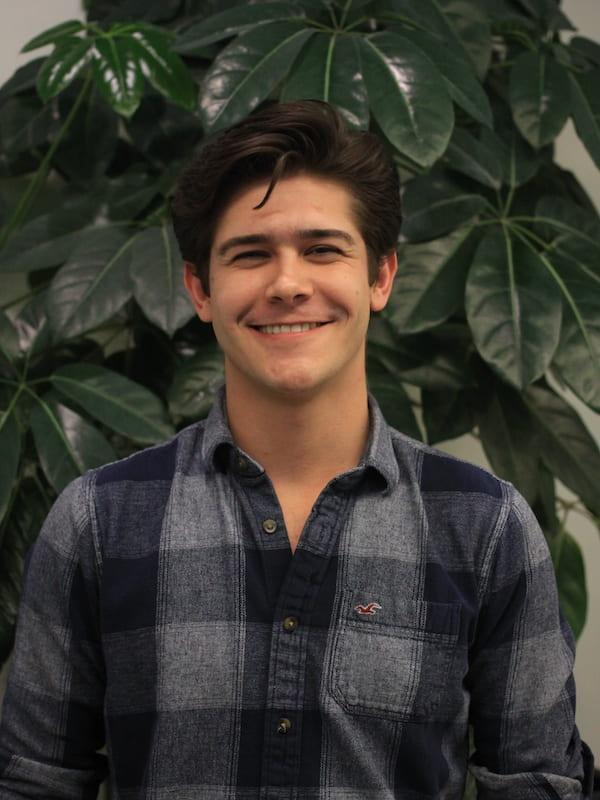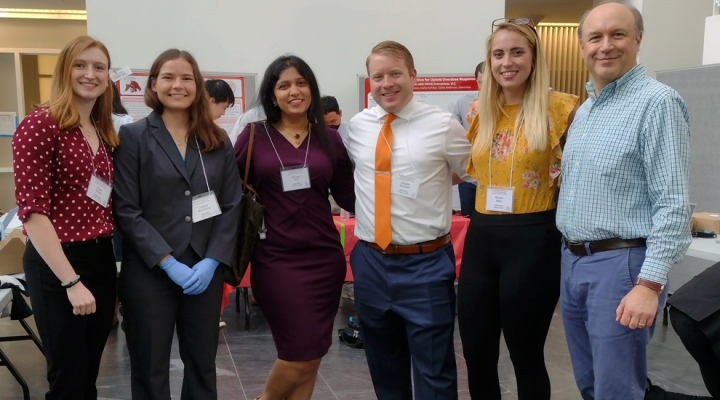(This story is Part 2 in a series featuring MSE M.Eng. students and the projects they worked on.)
Some students with a four-year undergraduate degree in materials science decide to jump right into the world of work. Others know that they would like to explore further research and the possibility of teaching, so they often look for a Master’s of Science or a doctoral program where they can continue their studies.
What about those students who know they want to join industry, but hope to do so with advanced technical and practical skills that would enhance their value to employers?
For these students, Cornell’s Department of Materials Science and Engineering (MSE) offers a professionally-oriented Masters of Engineering (M.Eng.) program. As the program’s website says, “Cornell M.Eng. graduates can be found in almost every field related to the physical sciences and engineering. Many students leverage the advanced problem-solving skills developed in this program to pursue leadership careers in business, technology management, or governance. Cornell is one of only a few institutions in the U.S. to offer this type of program.
This two-semester program in Materials Science and Engineering includes classroom work in core areas of study as well as one management course and six technical elective credits. But the key part of the M.Eng. experience is the corporate-sponsored project each student works on. The project counts for anywhere from four to eight credits and is done in close coordination with a representative from the sponsoring company.
Rather than speak in generalities, let’s look at a recent MSE M.Eng. student to give a small taste of what is possible.
Ryan Prager ’20 M.Eng.
Prager earned a B.Eng. degree in materials engineering from McMaster University in Hamilton, Ontario in 2019. While a student at McMaster, Prager had a summer co-op with OTI Lumionics. OTI is a start-up focused on organic LED (OLED) display technologies. Once he graduated, Prager knew that he wanted to continue right on into graduate work.
“I was very particular when I was applying to graduate schools,” says Prager. “I only considered schools that had the kind of facilities I wanted to be working in and that were conducting the kind of research I wanted to be doing.” He was impressed by the breadth and depth of Cornell’s expertise in semiconductor materials and thought it would be the perfect place to pursue his M.Eng. Prager also appreciated the freedom Cornell’s MSE M.Eng. program would give him to explore different aspects of materials science.
“Where else could you go take a glass science class taught by the former CTO of Corning? Or courses on thin-film deposition and computational materials research taught by experts like Professor Grace Xing and Professor Nicole Benedek?” says Prager. “I knew I wanted research experience, and I also knew that if I wanted to get the position I was gunning for, an M.Eng. from Cornell would be invaluable.”
Another major selling point for the Cornell program was Associate Director of the MSE M.Eng. program, Alex Deyhim. “I had never been to Cornell—never been to Ithaca,” says Prager. “And when I came to the school to visit as I was trying to pick a program, I met Alex. He was so encouraging and supportive that it really gave me a great initial impression of the program.”
In Prager’s year at Cornell, his first impression of Deyhim was proven true again and again. “For the MSE M.Eng. program he is a huge driving force behind how beneficial it is and how much a student can get out of it in a year,” says Prager. “He is very supportive and helps you dream big while also helping to keep your feet on the ground. He encourages all of us to go after experiences now that will give us opportunities in the future and he pushes us to explore what interests us. He is awesome.”
The MSE M.Eng. degree from Cornell has an essential experiential component; every student must tackle one project that is a major focus of their time here. For Prager, exploring the things that interest him meant doing two projects instead of the usual one and he was able to make it happen with Deyhim’s support.
The first was done in collaboration with ams AG, a firm which manufactures sensors, interfaces and related software for consumer, communications, industrial, medical, and automotive markets. Prager worked with the design and processing teams of ams AG to use compound semiconductor materials to fabricate prototype optical sensor components. He also used the Cornell Nanoscale Science and Technology Facility (CNF) to process semiconductors and test device components.
“Getting to work in the CNF was incredible,” says Prager. “The equipment I used as part of my M.Eng. project was industry standard. It was a lot of responsibility to be using these fancy ‘toys’ but I got so much invaluable training out of it.”
The second project Prager worked on was in the CAPE CRYSTAL lab of MSE Assistant Professor Julia Dshemuchadse. While the first project was a hands-on semiconductor materials project, the second was computational in nature. CAPE CRYSTAL stands for ‘Computational Assembly, Phase Exploration, and Crystal Structure Analysis Laboratory’ and it gave Prager a chance to deepen his computational skills.
In Dshemuchadse’s lab Prager was responsible for developing computational simulations to model how nano-particles assemble unique material structures at the microscopic level. Using exploratory analysis in combination with data-science techniques, he investigated a wide variety of chemical systems to explore which conditions result in robust material structures. This combination of hands-on and computational work suited Prager just fine and, in fact, presaged his work today at Applied Materials.
“I work with the ion implantation division of Applied Materials,” says Prager. “I work with semiconductors, so I get to draw on my experimental experience, but I also use a lot of the skills I learned in Professor Dshemuchadse’s computational group. My M.Eng. year was the perfect preparation.” Prager knows that an M.Eng. isn’t for everyone, but it is exactly right for some. “Clearly, you need to be someone who is industry-oriented,” says Prager. “If you are driven and willing to put in a lot of work for one year, you can get out of it even more than you put in. And it helps to be someone who has their eyes open for opportunities as they come your way. It is a fast-paced program and if you are alert to possibilities you will learn so much.”





